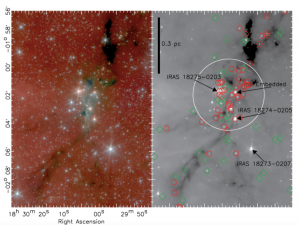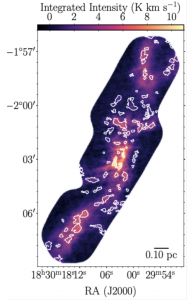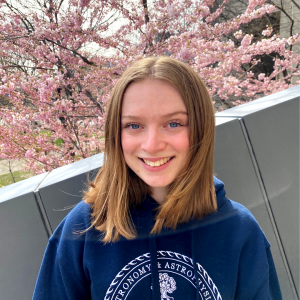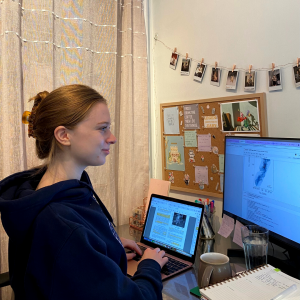Emma is originally from Toronto. She just finished her 4th and final year of undergrad at U of T’s David A. Dunlap Department of Astronomy and Astrophysics, with an Astronomy and Physics specialist and minor in mathematics.
In her free time, Emma loves to read. Emma is thrilled to be a part of SURP this summer investigating star formation with Prof. Rachel Friesen.
What made you decide to participate in SURP?
I decided to participate in SURP because it provides a unique opportunity to engage in astronomy research during my undergrad. I have always loved my astronomy and physics courses, but SURP is an excellent way to apply the knowledge and skills I have learned to an active area of research. As I am deciding about attending graduate school, I am also trying to figure out which area of astronomy interests me the most!
What is your favourite thing about SURP?
My favourite thing about SURP has been the mentorship from my supervisor. Professor Rachel Friesen has provided lots of helpful advice and support with the project and has inspired me to perhaps continue to pursue research in star formation!
Can you tell us about your research project?
My research this summer focuses on investigating the earliest stages of star formation in a nearby, young, clustered star-forming region called “Serpens South.” This region contains a bright protostellar central cluster with filaments extending outward. Using combined data from the VLA and GBT, we are looking at the ammonia emission from Serpens South as this highlights the cold, dense gas that is required for star formation. By performing a dendrogram hierarchical analysis on the dense gas, we were able to locate the peaks in the ammonia emission which correspond to the dense cores in the gas that could collapse to form stars. The goal in this project was to assess the stability of these dense cores as well as investigate the possible influence that the central cluster has on the surrounding dense gas.
Can you explain how SURP has perhaps been different from your undergrad work?
SURP has been very different from my undergrad work as it provides the opportunity to deeply understand a specific field of astronomy rather than broadly covering a range of topics. I enjoy the freedom that comes with the lack of deadlines as it allows time to truly appreciate what I am learning instead of focusing on submitting assignments for grades.
What are your plans for the future?
Now that I have finished my undergrad, I plan on taking a year off before applying to grad school next year!

Colour composite image of the Spitzer IRAC mosaics of Serpens South. Red circles are Class I protostars, and green diamonds are Class II stars with disks. The white circle marks the dense core of the cluster. Credit: Gutermuth et al (2008).

Ammonia emission from Serpens South. Locations of the dense cores are outlined in white. Credit: Emma Jarvis.


